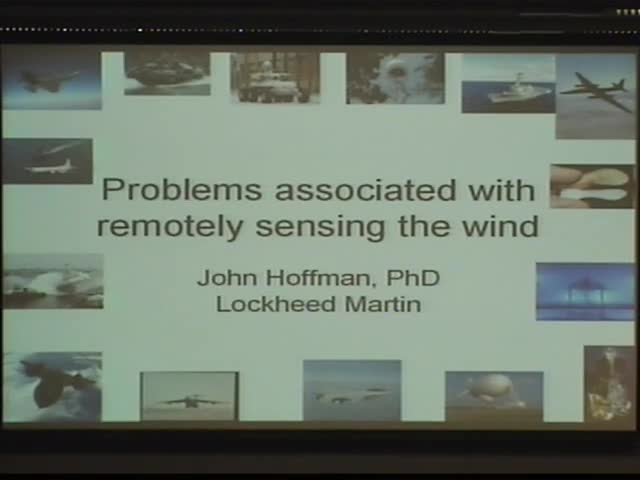Team 4: Problems associated with remotely sensing wind speed
Presenter
August 5, 2009
Keywords:
- Mathematical geography and demography
MSC:
- 91D20
Abstract
Projection Description:
The earth’s atmosphere is a swirling ball of gas. The cause of
the swirling, especially near the surface, is due to different
temperatures of the air. These different air temperatures
change the index of refraction for the air in the atmosphere.
Thus when light travels through this turbulent/random medium
the light ends up getting speckled. It is these speckles,
caused by the turbulent atmosphere that limited the resolution
of earth-bound astronomical observations until the invention of
adaptive optics. You have observed this phenomenon any time
you’ve looked at a star. It is the motion of these speckles
over our eyes that causes the stars to twinkle. The graphic
below illustrates how light from a source ends up distorted by
the atmosphere resulting in a specular image.
Our problem focuses on a particular aspect of imaging through
turbulence. In the early 1970’s it was shown by Lawrence,
Clifford and Oochs and Lee and Harp that the primary source of
the variation of the intensity of light on a pair of photo
detector was from the wind. This observation can be used to
create a poorly posed inverse problem that if one can solve,
permits one to compute the cross wind profile along the path of
the light beam. The specific relationship relating time-lagged
cross covariance and wind speed is given by:
where:
τ – is the time lag between adjacent pixels
L – is the length of the flight path.
k – is wave number of the light used (the light is assumed to
be monochromatic.)
K – has units of 1 / length, is the reciprocal of the size of a
turbulent eddy ball.
ρ – spacing between detectors
v(z) – wind speed parallel to the line connecting the
detectors
Cn2 (z) – scintillation
coefficient
Several different authors since then have advertised an ability
to measure the gross average wind over long periods of time.
(10 minute intervals is a common metric.) Here are several
questions that I currently have on this phenomenology. The
team will answer any questions that I don’t answer between now
and this summer.
What is the impact of assuming Cn2 (z) is constant? Most
practitioners make this assumption. How is the inverse problem
affected if it is not constant? Is it possible to distinguish
between affects caused by variable Cn2 (z) and varying wind?
The environment is constantly changing, thus measuring the
time lagged cross covariance is a very noisy measurement, and
difficult to do. In particular, given the underlying noise
assumptions of the inputs to this integral equation, what kind
of noise does one observe when measuring
CχN (ρ,τ)?
Question 2 above can be attacked in two ways. The first
is
an analytic approach the second is a simulation based approach.
Can we create a simulation to permit us to assess question 2?
A standard technique is based on phase screens. This would
require examining the literature, possibly grabbing code off
the net, and implementing a simulation in Matlab or similar
system.
Related to question 2, how long a period of time can one
measure CχN (ρ,τ)? Most authors use 10 minutes, can it be done in 10
seconds? 1 second? 0.1 seconds?
Key References: (a much longer list will be provided
this
summer):
Laser Beam Propagation through Random Media, Second Edition
Larry C. Andrews and Ronald L. Phillips, SPIE Press, 2005.
Imaging Through Turbulence, Michael C. Roggemann, Byron M.
Welsh, CRC Press, 1996.
Lawrence, Ochs, and Clifford, “Use of Scintillations to Measure
Average Wind Across a Light Beam”, Applied Optics, 1972, Volume
11, #2, Page 239-243.
Barakat, and Buder, “Remote Sensing of Crosswind profiles using
the correlation slope method”, Journal of the Optical Society
of America, 1979, volume 69, #11, Pages 1604-1608.
Lee, Harp, “Weak Scattering in Random Media, with Applications
to Remote Probing”, Proceedings of the IEEE, 1969, Volume 57,
#4. Pages 375+
Image copied and cropped from:
http://www.aanda.org/articles/aa/full/2003/47/aa3613/img193.gif
